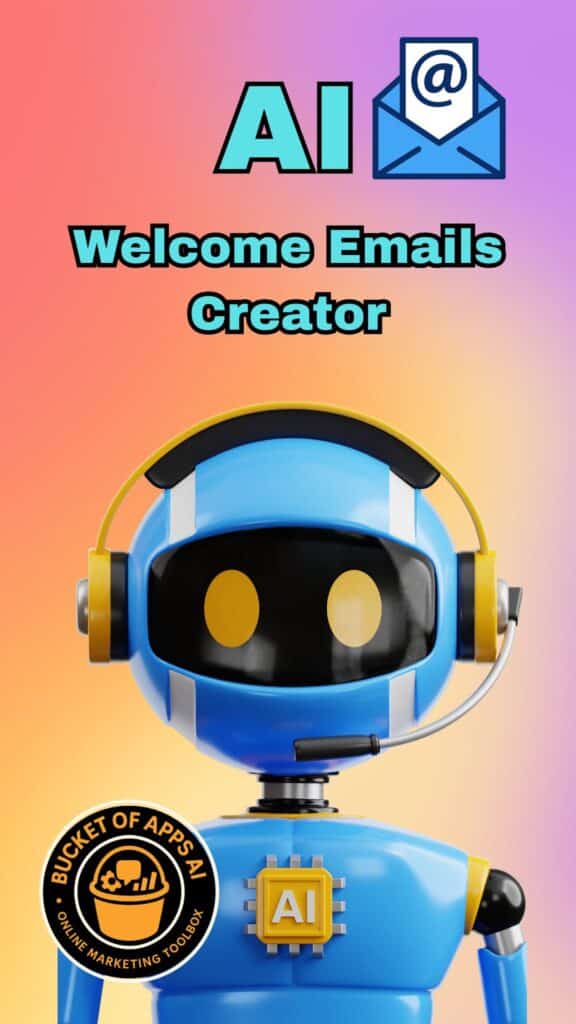
Create Stellar Welcome Emails with our FREE AI Welcome Email Creator.
Crafting a welcome email for your sales sequence can be daunting. If you miss the mark, your reader may unsubscribe taking your time to make that ethical bribe, all your efforts and cash marketing your landing page, and your hopes of making a sale with them. This generatpr will help you create a great welcome email using marketing best practices.
What Makes a Great Email Marketing Welcome Email [2025 Guide]
A well-written email marketing welcome email sets the stage for every new subscriber. This first message introduces your brand and creates an instant connection. If done right, it makes readers feel valued and eager to hear more.
Great welcome emails build trust and set clear expectations. They make a positive first impression, showing subscribers what they can expect from future messages. In this post, you’ll learn the key elements that separate a forgettable email from a memorable one.
The Purpose and Benefits of a Welcome Email
A welcome email is the first message your subscribers see after signing up, and it plays a major role in shaping how they view your brand. This first impression goes beyond just saying “hello.” A strong email marketing welcome email builds a foundation that helps future emails succeed and puts your reader at ease right away.
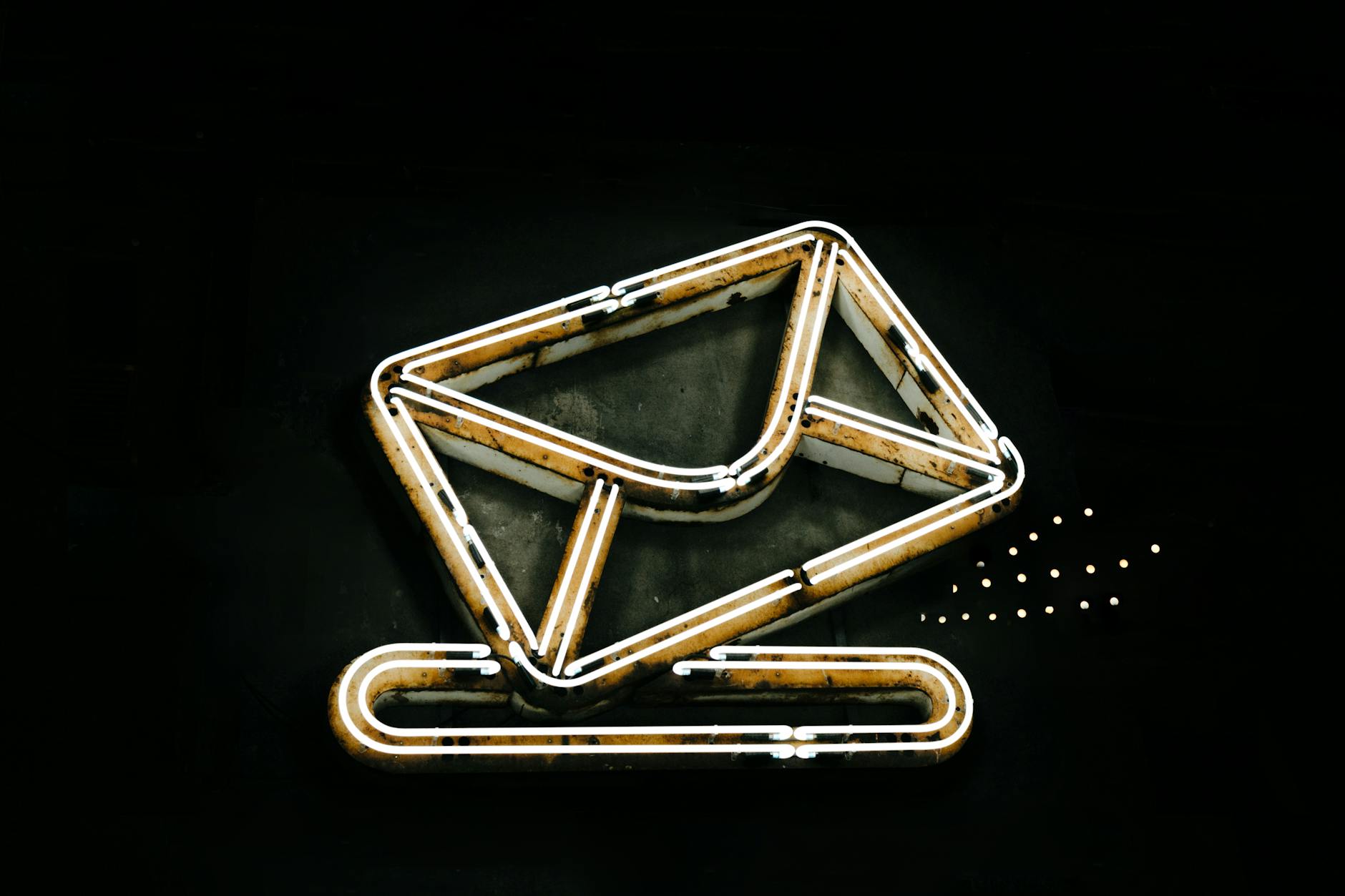
Photo by Maksim Goncharenok
Why the First Email Matters
Your first email sets the tone for all the messages that follow. Readers decide quickly whether they want to keep opening your emails or ignore them. A thoughtful welcome email helps build trust right away. Brands that send a clear and friendly welcome message are more likely to keep subscribers happy and active.
Making a personal connection in your welcome email also helps subscribers feel like more than just a number. When you show that you value them from the very beginning, they’ll look forward to hearing from you more often.
Key Benefits of a Welcome Email
A well-written email marketing welcome email offers many clear payoffs. Here are some top reasons why sending this first email is so important:
- Builds Trust Quickly: A welcome email tells your subscribers they’ve made a good choice by joining your list. This early contact reassures them and sets your brand apart as open and honest.
- Sets Clear Expectations: This first message sets the ground rules. You can let people know how often you’ll email, what content to expect, and how your emails will help them. Setting these expectations helps reduce confusion and cuts down on unsubscribes.
- Encourages Engagement: When you invite action in the welcome email—like clicking a link, replying to a question, or using a discount code—you guide subscribers toward a lasting relationship with your brand.
- Increases Deliverability: People who open and interact with your first email are more likely to see future emails, helping you avoid spam folders, as explained in this welcome email deliverability guide.
- Spotlights Your Brand Personality: The voice, style, and look of your welcome email give new subscribers a taste of what your brand stands for. This builds loyalty from the start.
When readers receive a thoughtful, informative welcome email, they feel respected—and they’re more likely to keep opening your messages. This simple step helps turn casual readers into loyal fans who want to connect with your brand over time.
Essential Elements of a Great Email Marketing Welcome Email
The best email marketing welcome emails focus on building positive relationships from the first moment. Thoughtful details set your brand apart, help you earn trust, and make subscribers excited for what’s ahead. Let’s break down the elements that turn an average first email into a powerful one.
Personalized Greeting
An email marketing welcome email should start with a friendly hello and, whenever possible, your subscriber’s name. People react better to messages that feel human. When a reader sees their own name, it stops them from thinking, “This is just another mass email.” Personalized greetings show you respect your subscribers and see them as individuals, not just data on an email list.
Tailored opening lines or references based on where someone signed up, like a specific landing page or event, can further boost your connection. Even a simple “Welcome to our community, Sarah!” can make the difference between an ignored email and one that gets opened, read, and remembered.
Clear Branding and Visual Appeal
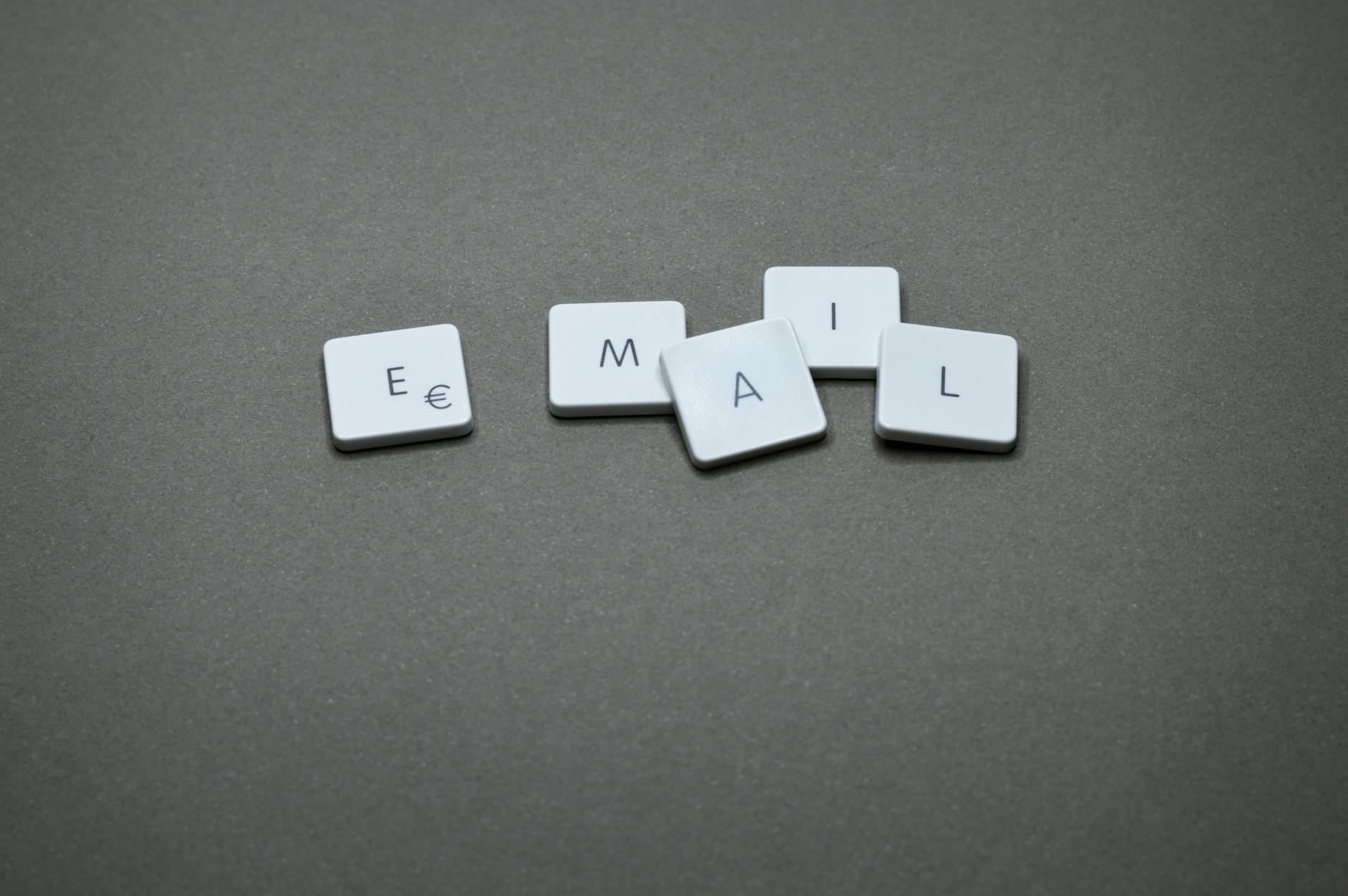
Photo by Miguel Á. Padriñán
First impressions matter, and your welcome email is a visual introduction to your brand. Use your logo, brand colors, and the same style your audience sees on your website or social media. Consistent branding makes your messages feel familiar and trustworthy.
Strong design helps people recognize you right away and reassures them they’re reading something official. Balanced white space, a clear font, and eye-catching graphics can all help keep your email easy to read and visually inviting.
Setting Expectations Early
Clarity leads to confidence. Tell new subscribers what’s coming next. Are you sending tips every week? Exclusive offers once a month? Let people know how often you’ll write and what you’ll send.
Setting expectations in your email marketing welcome email lowers anxiety and builds trust. Add a short section that says:
- How often you’ll email (for example: “Look for our newsletter every Friday”)
- The type of content you’ll send (such as “Tips, resources, and the latest company news”)
- A reminder about privacy or how to update preferences
Subscribers who understand what’s ahead are less likely to unsubscribe or mark your message as spam. They’ll feel more in control, making them better engaged.
For more on how setting expectations can improve your strategy, check out this detailed breakdown on welcome email best practices.
Valuable First Offer or Incentive
The best welcome emails thank subscribers with something valuable. It shows that joining your list is worth their time. A good first offer can be:
- A special discount code
- An exclusive downloadable guide or checklist
- Early access to a sale or new product
- Entry into a giveaway just for subscribers
Including a relevant offer raises your open and click rates. Even small gestures, like a helpful resource or coupon, make people happy they signed up. Companies that provide immediate value see higher engagement and loyalty as a result.
Strong Call to Action
A good email marketing welcome email always guides subscribers to the next step. That’s where the call to action (CTA) comes in.
Effective CTAs are clear and direct. Tell readers exactly what they should do next, whether that’s:
- Shop the latest deals
- Download a free resource
- Follow your brand on social media
- Adjust email preferences
Use action-oriented language, make your CTA button easy to spot, and avoid cramming too many choices into your email. Limit yourself to one main CTA—this reduces confusion and increases clicks. Give readers one clear path to connect with your brand right away.
For an in-depth look at optimizing your email CTAs, see this list of high-performing email marketing calls to action.
Common Mistakes to Avoid in Welcome Emails
Even the strongest email marketing welcome email can lose its power if a few key mistakes sneak in. These blunders can push new subscribers away and lower your open rates. Below are the most common pitfalls to avoid if you want to make a professional, warm impression from the start.
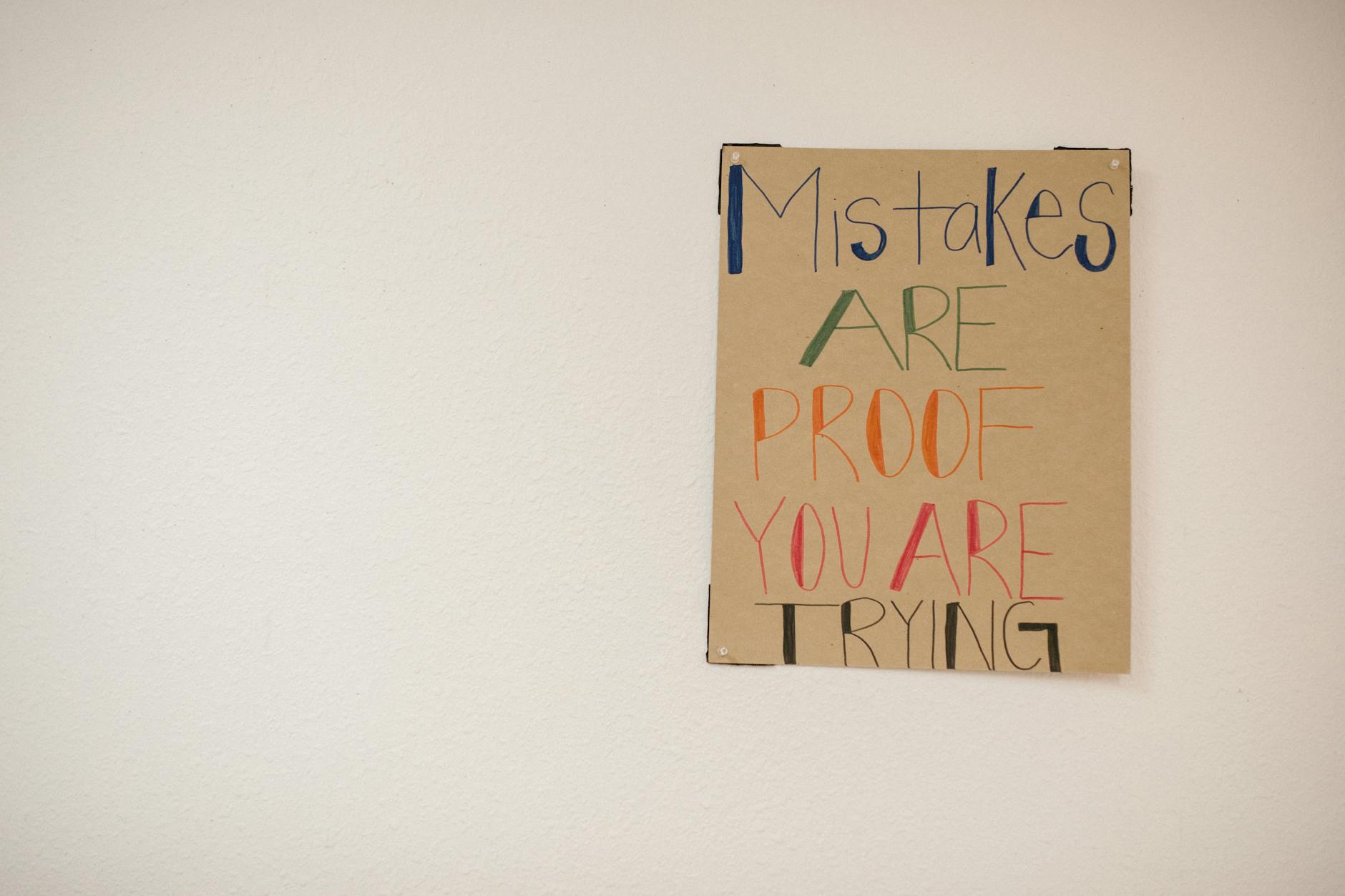
Photo by RDNE Stock project
Sending a Generic Message
A welcome email that feels copied and pasted makes readers feel invisible. It’s tempting to use a one-size-fits-all template, but this can backfire. People want to feel recognized as real individuals. If your “hello” looks or sounds like every other email in their inbox, it’s easy for subscribers to hit delete or ignore you for good.
- Use the subscriber’s name when possible.
- Add a sentence that relates to how or where they joined your list.
- Reflect your brand’s unique voice and style.
Personal touches make new subscribers more likely to stay engaged. For more detailed examples, you can explore insights from “10 Welcome Email Mistakes to Avoid & How to Do It Right”.
Leaving Out a Clear Call to Action
Every email marketing welcome email needs to guide the reader. If you forget to include a clear call to action (CTA), subscribers are left wondering what to do next. The result? They move on and might never engage with your future emails.
- Add a main CTA that stands out. Make it action-focused, like “Shop Now,” “Claim Your Discount,” or “Download Your Guide.”
- Avoid adding too many links or buttons, as this can overwhelm new readers.
A single, concise CTA helps keep your message focused and easy to follow.
Overwhelming Design and Layout
Busy emails crammed with colors, fonts, or images are hard to read. A confusing design distracts from your message and can annoy your newest fans.
- Stick to your brand colors and clear, readable fonts.
- Leave plenty of white space so the content feels open and approachable.
- Make sure the most important details (like your offer and CTA) are easy to find.
Subscribers should be able to scan your email in seconds and find what matters quickly. For more design tips, see the “4 Welcome Email Mistakes to Avoid” article, which covers the risks of off-brand messages or using inconsistent senders.
Waiting Too Long to Send
Timing can make or break first impressions. If there’s a long gap between signup and your first welcome email, that excitement fizzles out. People forget they signed up or lose interest—sometimes before your email arrives.
- Set your email marketing welcome email to reach subscribers immediately after they join.
- Automate the process instead of waiting to send emails in batches.
Prompt delivery keeps your brand fresh in their memory and builds momentum.
Including Too Much Information
It’s tempting to pile every link, story, or product into your first message. But a “wall of text” or a laundry list of offers can be overwhelming.
- Keep your content focused. Share only what’s most relevant—like your brand story, key benefits, and a single offer or resource.
- Save product catalogs, detailed company history, or subscriber surveys for later emails.
This approach keeps things simple and lets readers digest your message with ease. For tips on what to avoid—like turning your welcome email into a survey or lengthy Q&A—read “8 fatal errors not to be done in your welcome email”.
Forgetting to Set Expectations
If you don’t explain what’s coming next, subscribers may be caught off guard by later emails. This can result in quick unsubscribes.
- Share how often you’ll email and what kind of content they’ll get.
- Mention how to update email preferences or unsubscribe if they wish.
Clear communication builds comfort and reduces the risk of future complaints or spam reports.
Avoiding these mistakes helps your email marketing welcome email connect with readers and fosters long-term loyalty. For even more strategies, see why welcome emails matter and how they can transform your marketing results.
Optimizing Welcome Emails for Higher Engagement
You’ve gotten the basics right, but standing out in a crowded inbox takes more. Optimizing your email marketing welcome email goes beyond design and friendly language. To truly connect with subscribers and keep them engaged, focus on ongoing improvements. This means testing every element, measuring your results, and refining each part for better response. Little changes—from subject lines to content order—can make a big difference in your open and click rates.
Fine-Tuning Subject Lines and Preview Text
The journey starts with your subject line and preview text—the first things subscribers notice. Even a perfect welcome email won’t get results if it never gets opened. Subject lines need to grab attention while staying true to your brand and content.
Some quick wins for higher open rates include:
- Use clear, transparent language. Let people know exactly what’s inside (“Your member discount is here!”).
- Add a personal touch. Include the subscriber’s first name if possible.
- Set up preview text. Make sure it adds detail or teases a benefit, not just repeats the subject.
For inspiration, check out these welcome email subject line tips and examples that show how the right phrase can boost curiosity and clicks.
Test different subject lines over time. Switch out short phrases with longer ones, try emojis, or play with questions versus statements. Watch which options perform best. You might be surprised at what draws attention in your audience.
A/B Testing for Continuous Improvement
No guesswork—let data guide your choices. A/B testing means sending two versions of your welcome email (or even just the subject line) to different groups and tracking which one performs better. This method helps you see what really works for your unique audience.
Some things to test in your email marketing welcome email:
- Subject lines and preview text
- Greeting style (fun vs. formal)
- Placement of images or logos
- Call to action button color or text
- Types of offers or incentives
Running simple experiments and tracking metrics gives you hard proof of what keeps readers engaged. To go deeper, explore advanced tips in this article on email testing and optimization.
Tracking and Measuring Key Metrics
Optimization means knowing your numbers. Tracking lets you see which changes move the needle and which need more work. Focus on these essential metrics:
- Open Rate: Shows how many people are reading your subject lines.
- Click Rate: Counts the number who take action inside your welcome email.
- Conversion Rate: Reveals how many completed your desired action, like redeeming an offer.
- Unsubscribe Rate: Tells you if your email is sending people away.
Use simple dashboards or email marketing tools for easy reporting. Review your results every few weeks and set clear goals. Aim for steady improvement, not instant perfection.
If you want more hands-on insights, check out strategies in guides like Welcome Email Examples & Best Practices to Boost Sales.
Refining Content and Layout Based on Data
When you spot patterns in your data, act on them. If a specific offer in your email marketing welcome email gets more clicks, highlight it sooner. If people drop off before your call to action, try moving it higher or making it bolder.
Simple tricks include:
- Using bullet points for key benefits
- Shortening long paragraphs for easy scanning
- Rearranging sections so your main offer appears earlier
Stay flexible and willing to update your welcome email until you find the right mix.
Using Automated Tools and Templates
The right tools make fine-tuning easier for busy marketers. Many email platforms let you set up automated tests, track real-time results, and tweak templates without much effort. Start with proven welcome email templates, then adjust based on your data.
For even more tips, explore resources on website onboarding and conversion optimization.
Make Every Welcome Count
Optimizing each email marketing welcome email gives your new subscribers a memorable start and keeps them coming back. A mix of A/B testing, simple tracking, and regular updates helps you avoid stale content and surprises your audience with every message.
 Photo by Walls.io
Photo by Walls.io
Best Practices from Successful Email Marketing Campaigns
A high-performing email marketing welcome email borrows from proven campaigns and repeatable strategies. By looking closely at what works for established brands, you gain simple ideas to improve your own results. Taking lessons from real-world winners helps you connect with new subscribers from the start.
Fast and Friendly Delivery
The most effective campaigns waste no time. Brands send their email marketing welcome email within minutes after someone joins. This creates instant recognition and shows you care about your subscribers’ excitement. Readers are most interested when they’ve just signed up, so a quick response feels personal and attentive.
Well-crafted welcome emails also keep the tone warm and direct. For example, using phrases like “We’re glad you’re here” and including the subscriber’s name breaks down barriers. Sharing a bit of your brand story or what you love about your customers can make new subscribers feel part of a community, not just an email list.
Highlighting Value Upfront
Successful campaigns place the subscriber first. Leading brands immediately spotlight the benefits of being on their list. The email marketing welcome email typically outlines:
- What subscribers get next (bonus content, offers)
- How often emails will come
- Where to find key resources or help
For instance, ecommerce brands often pair a quick “Thank you for joining!” with a ready-to-use discount code right in the first email. This makes the value tangible and immediate, speeding up the first conversion. If your offer is more about knowledge—like guides or how-tos—link them early in the message for easy access.
To generate your own enticing offers seamlessly, consider using a tool such as the Promotional offers AI email generator.
Simple, Recognizable Design
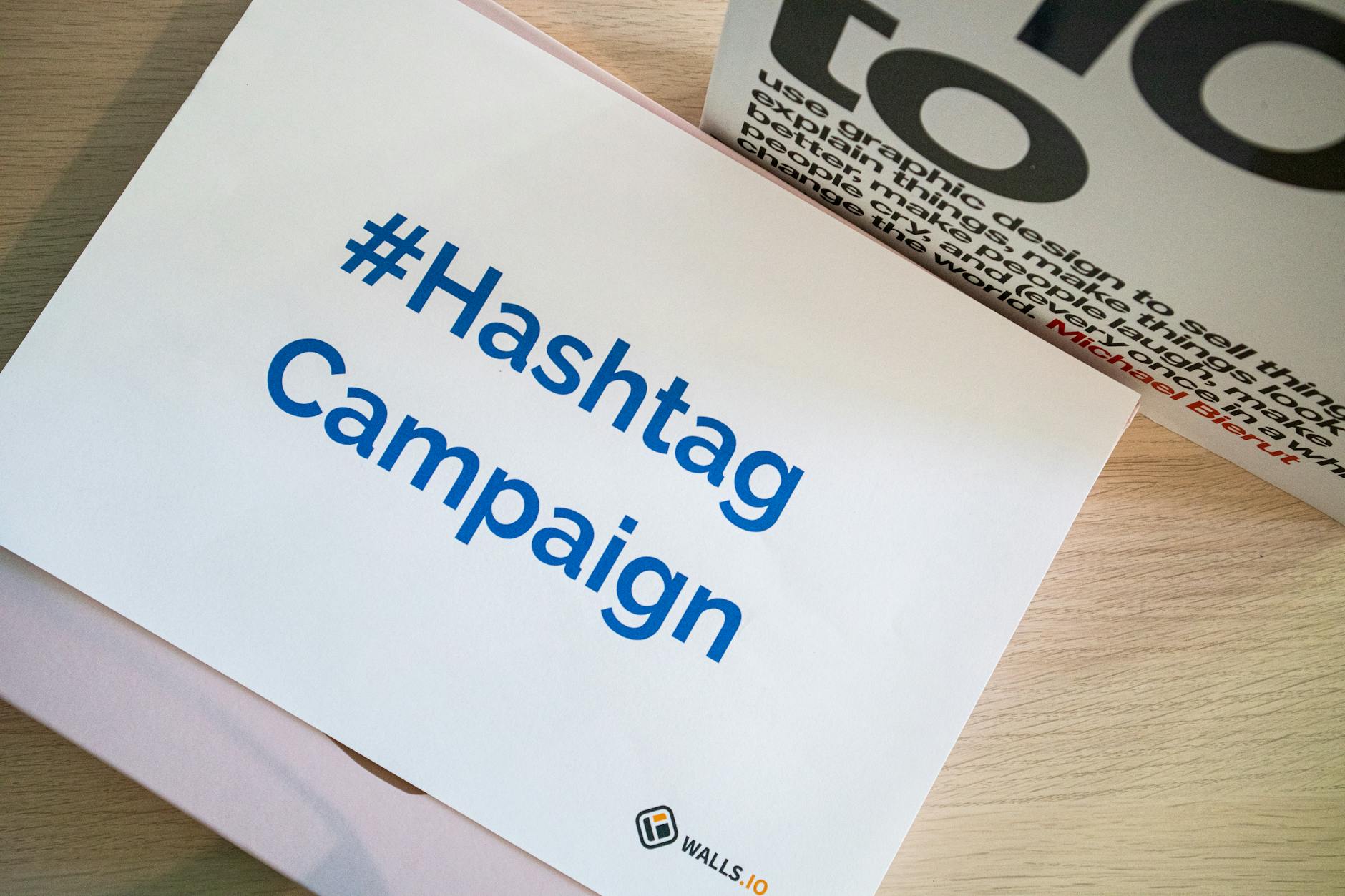
Photo by Walls.io
Best-in-class welcome emails stick to a clean, branded format. This means using your logo, familiar colors, and concise, scannable layouts. The main message is never hidden by clutter. Top brands also make their CTA button bold, with direct invitations such as “Start Saving” or “Unlock Your Guide.”
Keeping visuals on-brand and layouts mobile-friendly is a constant across winning examples. About half of emails are first opened on a mobile device. Keeping font sizes readable, buttons large enough to tap, and the offer near the top is a simple win.
Clear Series and Consistent Follow-Up
Instead of just one email, industry leaders extend the welcome over several messages. This lets you share more information without overloading the subscriber right away. A well-made welcome series might look like this:
- Immediate hello + instant value (discount/resource)
- Brand story and social links
- Deeper dive into products, services, or top content
- Questions or feedback request to boost engagement
Splitting your email marketing welcome email into a clear series stretches engagement and gives the subscriber time to respond at their own pace. For tips and examples, see this guide on how to write a killer welcome email series.
Measurable Outcomes and Refinement
Top campaigns always keep an eye on their numbers. They check open and click rates for every welcome email and tweak subject lines, timing, or CTA placement as needed. Simple A/B tests—like comparing button phrases or personal greetings—often reveal what keeps subscribers engaged.
For deeper insights into improving email strategy with AI and automation, browse solutions in AI email marketing tools.
Building Long-Term Trust
Beyond the first impression, successful brands set the stage for a respectful ongoing relationship. Great welcome emails quickly link to privacy policies, explain unsubscribing or preference options, and make it simple to adjust settings at any time. This openness builds trust and helps you maintain a positive sender reputation.
For privacy and compliance, make it easy for subscribers to find your website privacy and data protection information if they need it.
Real-World Results in Action
Well-known ecommerce stores and SaaS brands use these approaches every day. Data shows that a welcome series can boost conversions by 50% versus sending a single email. Sending the first email fast can double new subscriber engagement rates. Small tweaks in greeting, design, or offer can mean more sales or greater brand loyalty.
For even more best practices, explore in-depth summaries like Welcome Email Series Best Practices for a breakdown of the tactics top brands use to keep their lists active and profitable.
Conclusion
A great email marketing welcome email starts with a personal greeting, continues with clear expectations, and delivers immediate value. Small details—like friendly language, a strong visual style, and a single, direct call to action—build trust and set the right tone. Fine-tuning your approach through regular testing and honest tracking leads to stronger engagement over time.
Start now by applying these best practices to your own welcome email. Review your most recent message, and see where you can add clarity or simplify the design. Better welcomes lead to loyal subscribers and stronger results. Thank you for reading—share your thoughts or the improvements you plan to try next.
For more tools to improve your email campaigns and streamline your workflow, explore helpful solutions in AI-powered email marketing tools.
Share With Friends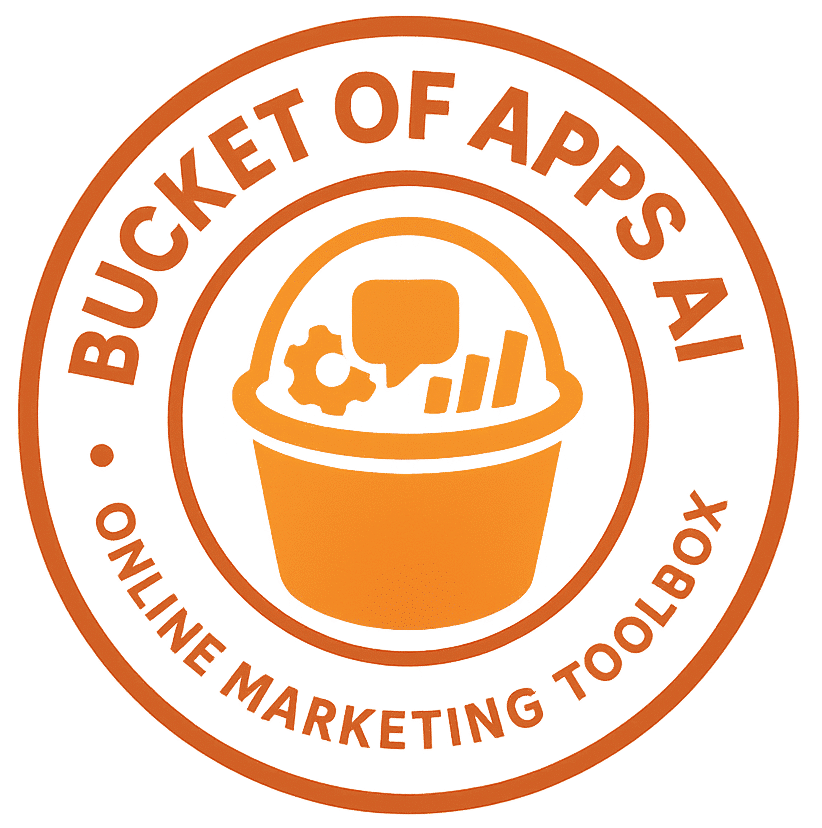
The idea of using AI to handle welcome emails addresses a real pain point for many marketers: maintaining consistency and engagement from the very first message. The potential to craft tone-specific messages at scale is the real kick here. This can help brands feel more personal without added workload.
If the tool allows for nuanced audience targeting while keeping the messaging fresh, that would make it really valuable.
You set these targets in both Question 2 and Question 4. The more detail you put into the target audience such as pasting in your customer avatar the better the end result of the returned message. From there setting tone will change how you relate to that ideal customer. Thanks for a great comment.